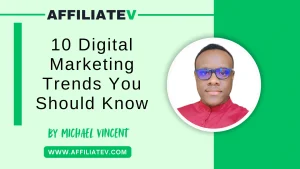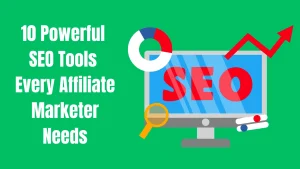How to Build a Strong Email List for Your Affiliate Marketing Business
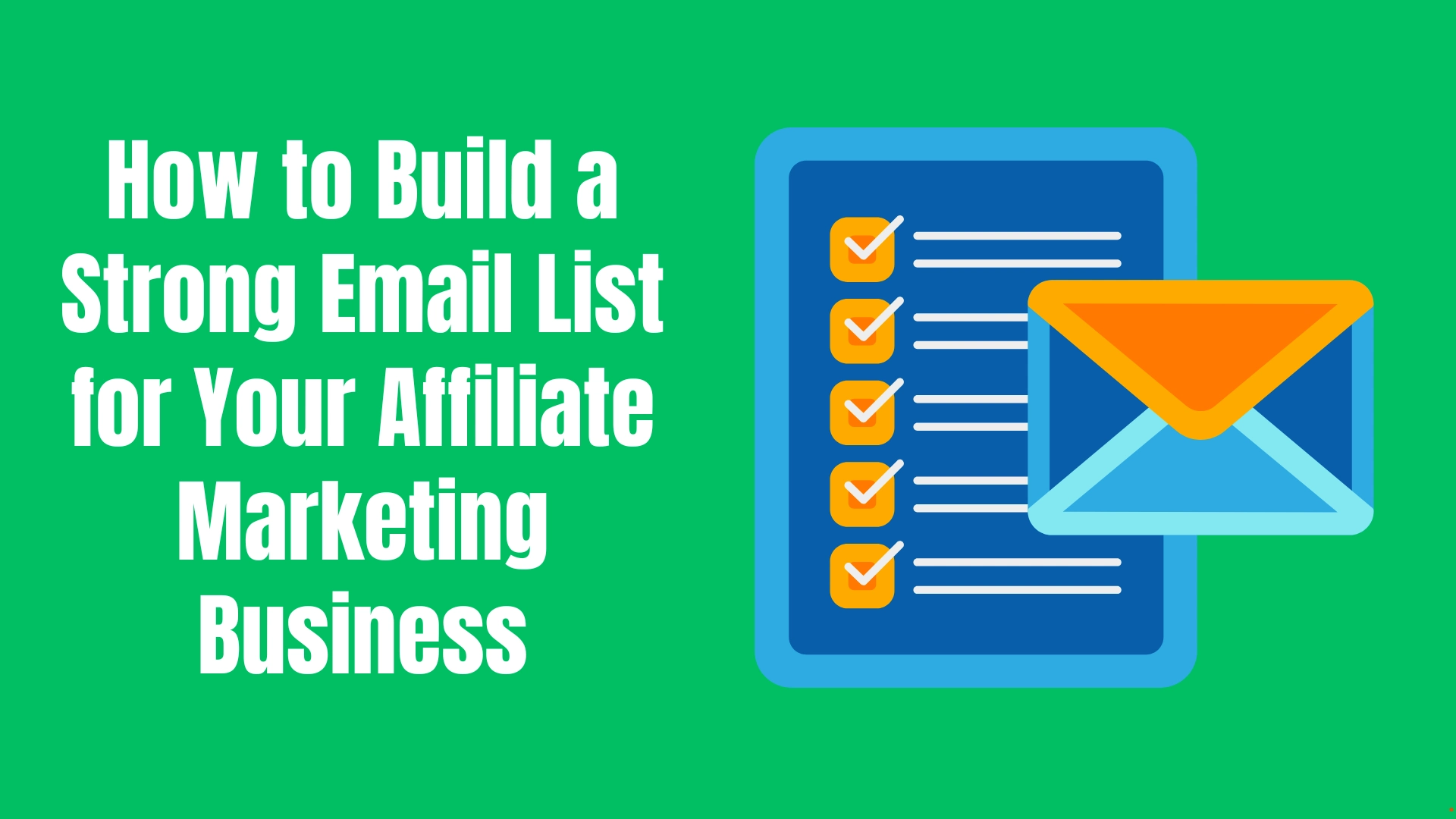
A strong email list is a must for any affiliate marketer. It gives you direct access to your audience, making it easier to promote products and earn commissions. Email marketing lets you control the conversation with your audience, contrary to social media and search engines, where algorithms decide who sees your content.
Building a quality list takes time and strategy. You need the right people, not just a big number. If your list is full of random subscribers, your emails won’t convert. That’s why smart marketers focus on attracting engaged readers who actually care about their niche.
The process starts with a great offer. A free guide, discount, or exclusive content can turn visitors into subscribers. Once they sign up, the real work begins. Writing engaging emails, staying consistent, and providing value keeps them interested.
Email marketing remains one of the most effective ways to drive sales. For every $1 spent, businesses make an average of $44 in return. If you do it right, your list becomes a steady source of income, helping you grow your affiliate business without relying on paid ads.
In this guide, I’ll walk you through the steps to build, grow, and manage your email list the right way. Let’s get started.
Key Takeaways
- A strong email list gives you direct access to your audience. Unlike social media, you control when and how you reach subscribers.
- Quality matters more than quantity. A small, engaged list converts better than a large, inactive one.
- A great lead magnet attracts the right subscribers. Offer something valuable, like a free guide or discount, to get people to sign up.
- Consistent, valuable emails keep your list engaged. Send useful content, not just promotions, to build trust and keep people interested.
- Segmentation boosts conversions. Group subscribers by interest or behavior to send more targeted and relevant emails.
- Email marketing is a long-term asset. A well-managed list can generate passive income and grow your affiliate business for years.
What is Email Marketing?
Email marketing is simply a way to connect with people through their inboxes. Businesses use it to share updates, promotions, and useful content. Email is a vital aspect of affiliate marketing because it gives direct access to your audience. This makes it one of the most reliable ways to build trust and drive sales.
The goal is to keep people interested, not just sell to them. A good email should feel personal, like a message from a friend. Successful marketers focus on value first; sharing tips, insights, or exclusive offers. When done right, email marketing turns subscribers into loyal customers and steady income for businesses.
The Importance of Having an Email List
Having an email list gives you direct access to your audience. As I had mentioned, unlike search engines and social media, where algorithms decide who to see your content, emails go straight to your subscribers. This makes it easier to build relationships and keep people engaged with your brand.
An email list also gives you control over your marketing. Platforms like Facebook or Instagram can change their rules anytime, but your list stays yours. This stability makes email marketing a long-term asset for any affiliate business.
Another big advantage is higher conversions. People who sign up for your emails already have an interest in what you offer. With the right content, you can guide them toward purchases, making emails a powerful tool for sales.
Email lists also help you create a loyal audience. Regular communication keeps you in their minds, making it more likely they’ll buy from you when they need something. By providing useful content, you turn subscribers into repeat customers.
Therefore, an email list isn’t just about selling but building trust. The stronger the connection with your audience, the more successful your affiliate marketing business will be.
How to Build a Strong Email List for Your Affiliate Marketing Business
Building a strong email list is essential for success in affiliate marketing. Here’s a step-by-step guide to building an engaged and profitable email list.
1. Choose the Right Email Marketing Platform
With so many options available, it’s crucial to pick one that matches your business needs. A good platform should allow you to automate your emails, segment your list based on user behavior, and provide insights through analytics.
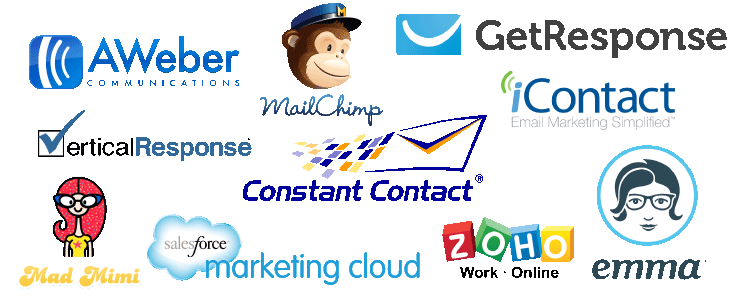
For instance, ConvertKit is an excellent choice for bloggers and content creators. It’s designed to help you grow your audience and automate your email workflows with ease. If you’re just starting, AWeber might be a good fit, as it’s beginner-friendly and offers automation features.
GetResponse is perfect for those who need automation combined with advanced features like landing page creation. Mailchimp is another solid option, especially for small lists, as it’s user-friendly and offers basic automation tools.
When selecting your platform, focus on what will help you manage your campaigns effectively. You need tools that let you communicate with subscribers at the right time, analyze the performance of your emails, and adjust your strategies as needed. A good ESP lays the foundation for growing your email list and engaging your audience successfully.
2. Create a High-Converting Lead Magnet
To build a strong email list, you need a high-converting lead magnet. Simply put, people won’t give you their email without a good reason. Offer them something valuable in return, and you’ll see your list grow.

Effective lead magnets could be ebooks, like a short guide on a topic your audience cares about. Or checklists, which provide a simple, step-by-step way to solve a problem. If you’re looking for something more engaging, offer free courses—a mini-email course packed with value can work wonders. For those promoting physical products, discounts and coupons are also a great option.
The key is to make your lead magnet relevant to your audience’s needs. It should address a specific problem and be easy for them to consume. When you offer real value, people will be more willing to share their email addresses and engage with your content.
3. Design a Simple, Clear Opt-In Form
Designing a simple, clear opt-in form is crucial to building your email list. You want visitors to sign up easily, without frustration.
Start by keeping the form short and to the point. Ask for only the necessary information, usually just an email (and maybe the name). The less work visitors have to do, the more likely they are to opt in.
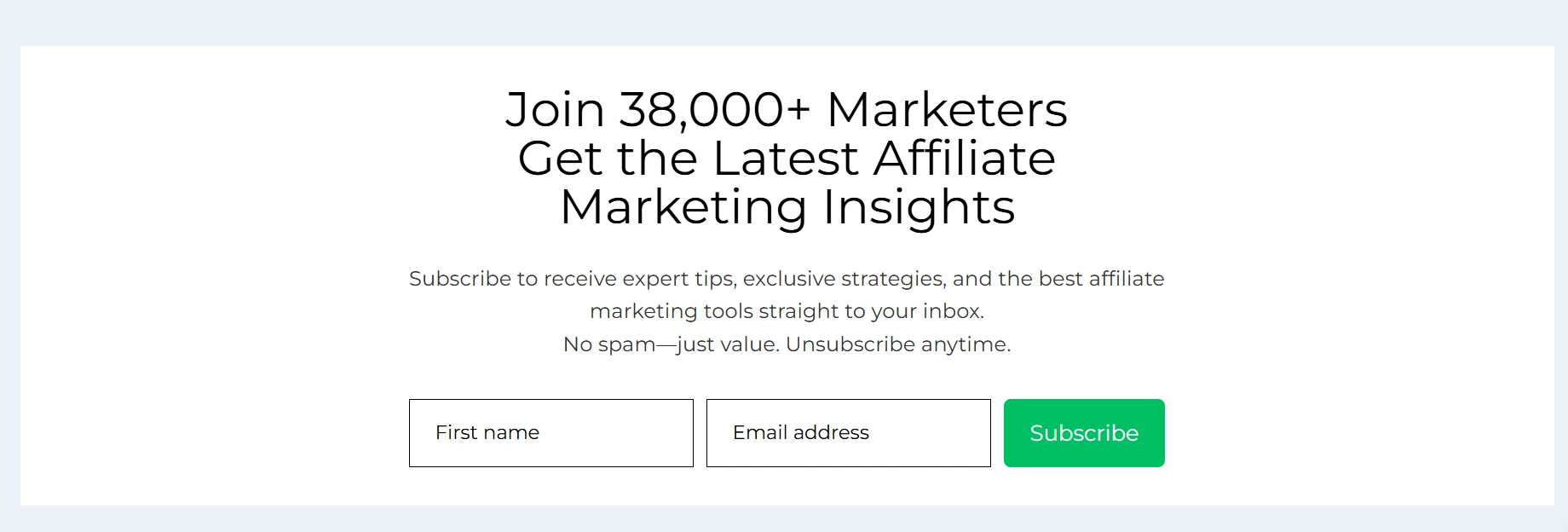
Next, use attention-grabbing headlines that clearly state the benefit of signing up. For example, instead of “Subscribe to our newsletter,” try “Get Your Free Guide Now!” This gives visitors a clear reason to give you their email.
Your CTA (Call to Action) should be strong and action-oriented. Phrases like “Get Started,” “Download Now,” or “Join Us” motivate visitors to act.
Finally, place the opt-in form in strategic locations, like on your website’s homepage, the upper part of the sidebar, or in your content. This enhances visibility. Pop-ups can catch attention, but don’t overdo it. Sidebars and in-content forms also work well because they blend seamlessly with your site’s flow.
When your form is simple, clear, and well-placed, you’ll see more sign-ups and start building that valuable email list.
4. Use Landing Pages for Higher Conversions
Using landing pages for your email list can significantly boost your conversions. Unlike a simple opt-in form, a landing page is designed to focus solely on one goal: getting people to sign up for your email list.
Start with a clear headline. It should immediately tell visitors what they’ll get by signing up. For example, “Download Your Free Marketing Guide” is direct and leaves no confusion.
Add social proof to show your credibility. This can be testimonials, user reviews, or any proof that your content has helped others. Visitors are more likely to trust you if they see that others have benefited from what you offer.
The landing page must also be mobile-friendly. Many visitors will check your page from their phones, so make sure it looks good and is easy to navigate on smaller screens.
By focusing on a single goal and making it easy for visitors to understand and take action, landing pages can boost your sign-ups and help grow your email list.
5. Drive Traffic to Your Opt-In Forms
Growing your email list starts with driving traffic to your opt-in forms. Without visitors, your sign-up forms won’t do much. The goal is to bring in people who are genuinely interested in what you offer.
One of the best ways to do this is through blog content. If you have a blog, place opt-in forms in high-traffic posts. Add them within the content, at the end of posts, and in the sidebar. People reading your articles are already engaged, making them more likely to subscribe.
Social media is another powerful tool. Share your lead magnet on platforms like Facebook, Instagram, Twitter, and Pinterest. Create eye-catching posts that explain the value of signing up. If your audience hangs out in Facebook Groups or Reddit communities, share your opt-in link when relevant.
If you create YouTube videos, mention your lead magnet in your content. Add a clear call to action and include the sign-up link in the description. Viewers who find your content useful will be more likely to subscribe.
For faster results, consider paid ads. Facebook and Google Ads let you target specific audiences who are interested in your niche. Set up ads that promote your lead magnet and direct users to your landing page. A well-optimized ad campaign can bring in high-quality subscribers quickly.
Keep testing different methods to see what works best. The more traffic you send to your opt-in forms, the faster your email list will grow.
6. Nurture Your Subscribers with Valuable Content
Getting subscribers is just the beginning. Keeping them engaged is what turns them into loyal followers and buyers. People won’t stay on your list if they only get sales pitches. They need value, connection, and a reason to keep opening your emails.
Start with a strong welcome email. Send it immediately after they sign up. Thank them for joining, remind them what they signed up for, and deliver the promised lead magnet. Set the right tone by being friendly and personal. If possible, share a bit about yourself and what they can expect from your emails.
After that, provide valuable content consistently. Send useful tips, exclusive insights, and helpful guides. Teach them something that makes their life easier. If you promote products, recommend ones you genuinely believe in. Show them you care more about their success than just making a commission.
Avoid pushing sales too soon. Trust comes before selling. If every email is just an ad, people will unsubscribe. Instead, focus on building a relationship. Educate first, sell later.
Make your emails interesting by using storytelling. Instead of listing facts, share personal experiences or real-life examples. Talk like you’re having a conversation, not giving a lecture. If your emails feel human, people will look forward to them.
A well-nurtured email list is your most valuable asset. Subscribers who trust you will not only buy from you but also stay with you for the long run.
8. Test, Track, and Optimize
Email marketing isn’t set-and-forget. You need to test, track, and optimize to keep improving results. If you’re not checking your numbers, you’re flying blind.
Start with open rates, this shows how many people actually open your emails. If your open rate is low, your subject lines need work. Try making them more curiosity-driven, personal, or benefit-focused. Avoid spammy words like “free” or “urgent,” which can send your email straight to the junk folder.
Next, check your click-through rates (CTR). This tells you if people are engaging with your content. If your CTR is weak, your email body and CTAs (calls to action) need adjusting. Make your emails easy to skim, use short paragraphs, and add buttons instead of just text links. A strong CTA should be clear and action-driven, like “Get Your Free Guide Now” instead of a vague “Learn More.”
Conversion rates are the ultimate goal. It shows how many people actually take the action you want, whether it’s buying a product or signing up for something. If your conversion rate is low, your offer might not be compelling enough, or your landing page needs fixing. Test different headlines, images, and button colors to see what works best.
Use A/B testing to experiment with different elements. Try two subject lines, two CTAs, or two email formats and see which one performs better. Small changes, like adjusting the placement of a CTA button or tweaking a few words, can lead to big improvements over time.
Tracking and optimizing never stops. Email trends change, and what worked last month might not work today. The more you analyze and adjust, the better your email marketing results will be.
Features of a Good Email List
A good email list isn’t just big; it’s engaged, targeted, and high-quality. Here’s what makes an email list truly valuable:
1. Quality Over Quantity
A massive list means nothing if people don’t open your emails. A good list is made up of real, interested subscribers who actually want your content. Avoid buying email lists—it’s a waste of money and could get your emails flagged as spam. Instead, focus on attracting the right audience with valuable lead magnets.
2. Engaged Subscribers
A strong list isn’t just full of names; it’s full of people who interact. They open emails, click links, and respond. If people aren’t engaging, your emails could end up in spam or be ignored. Keep subscribers engaged by sending useful content, not just sales pitches. Mix in tips, stories, and personal insights to keep things interesting.
3. Well-Segmented for Personalization
Not everyone on your list is the same. Some are new, some are loyal readers, and some are ready to buy. A good list is segmented so you can send the right message to the right people. If someone just signed up, send them a welcome series. If they’ve bought something, send related offers. The more personalized your emails, the better your results.
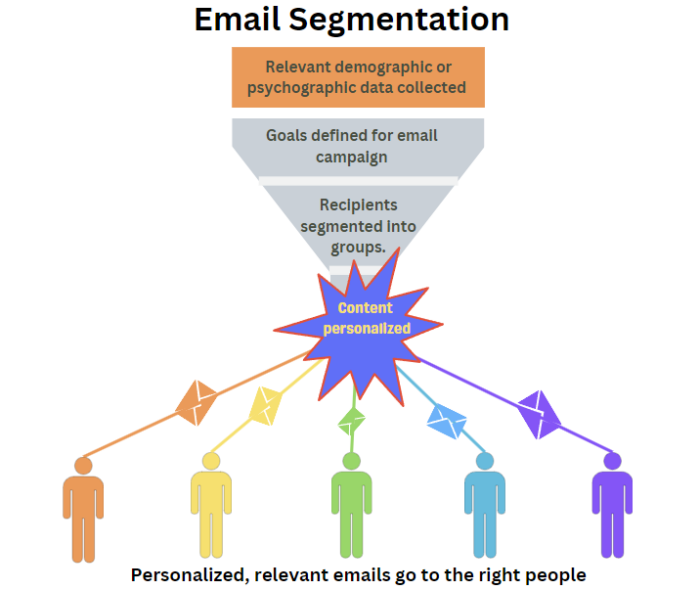
4. Regularly Cleaned and Updated
Email lists get messy over time. People change emails, stop engaging, or lose interest. A good list is cleaned often to remove inactive subscribers and fake emails. This keeps your open rates high and your emails out of spam folders. If someone hasn’t opened an email in months, try a re-engagement campaign. If they still don’t respond, remove them.
A good email list isn’t just about size. It’s about having the right people, keeping them engaged, and sending emails they actually want to read. If you focus on that, you’ll get better conversions, more trust, and stronger affiliate sales.
Conclusion
Building a strong email list takes time, but it’s worth it. I’ve seen firsthand how a well-built list can drive sales and build trust. It’s not just about collecting emails but connecting with real people.
Give value first. Offer something useful, whether it’s a guide, a discount, or just solid advice. Keep your emails interesting and personal. No one wants to feel like they’re on the receiving end of a sales robot.
Test, adjust, and clean your list often. If someone never opens your emails, let them go (sounds funny right!?). Focus on engaged subscribers as they’re the ones who actually buy.
Affiliate marketing success isn’t just about traffic. It’s about building relationships, and email is one of the best ways to do that. Stick with it, learn what works, and your list will become one of your most powerful assets.
Frequently Asked Question
Why is an email list important for affiliate marketing?
An email list gives you direct access to your audience. Unlike social media, where algorithms control reach, emails go straight to inboxes. You own your list, which means no sudden changes in traffic due to platform updates. Plus, email subscribers tend to convert better because they’ve already shown interest in your content.
How do I get people to sign up for my email list?
Offer something valuable in exchange for their email. A free ebook, a discount, or exclusive content works well. Keep the sign-up form short and clear—asking for just an email is usually enough. Also, place opt-in forms where people will see them, like in blog posts, pop-ups, and sidebars.
How often should I send emails to my list?
Aim for consistency, but don’t spam. Once or twice a week is a good starting point. If you send too often, people may unsubscribe. If you send too rarely, they might forget about you. The key is to provide useful, engaging content that keeps them interested.
How can I keep my email list engaged?
Don’t just sell—build a connection. Share valuable tips, personal stories, and updates that matter to your audience. Keep your emails short and easy to read. Use a friendly, conversational tone. And make sure every email has a clear purpose, whether it’s to educate, entertain, or offer something useful.
What’s the best way to clean and maintain my email list?
Remove inactive subscribers regularly. If someone hasn’t opened an email in 3–6 months, send a re-engagement email. If they still don’t respond, unsubscribe them. Keeping a clean list improves open rates and reduces spam complaints. Also, check for fake or invalid emails that can hurt your deliverability.





